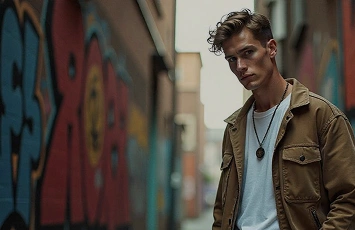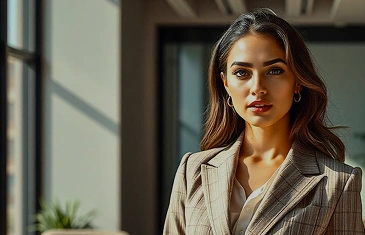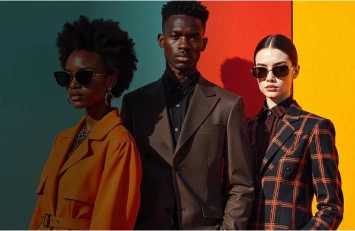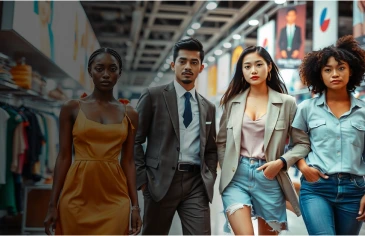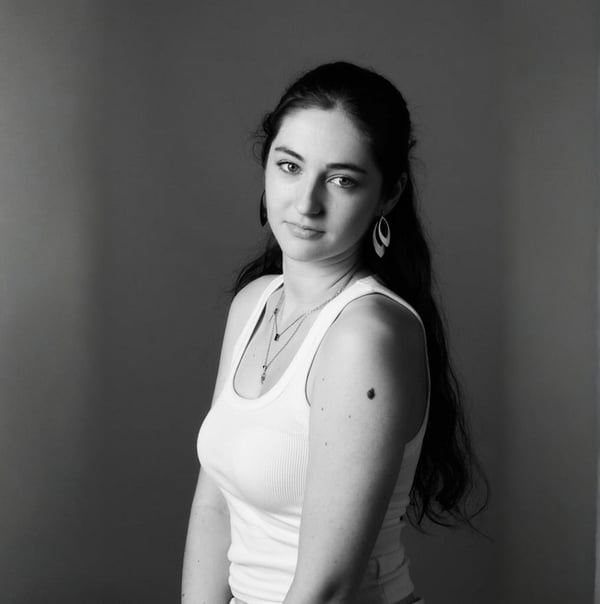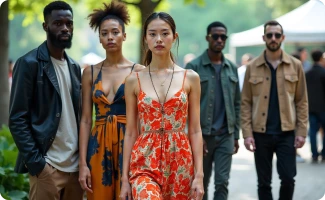
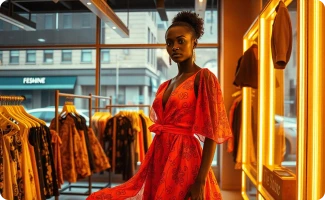
AI Photo Enlargement: Enhance Image Quality with Artificial Intelligence Technology
Table of Contents
Nowadays, high-quality visuals are essential from marketing to photography and social media. Whether it’s for a product catalog, an e-commerce platform, or a personal project, image clarity can make or break the impact of your content. That’s where AI photo enlargement comes in. This emerging technology is helping users upscale low resolution images with minimal effort.
AI photo enlargement uses artificial intelligence to analyze and recreate missing details in images. It's designed to increase the size of photos without sacrificing quality, on the contrary of traditional resizing methods that often result in blurry, pixelated images, especially when trying to enlarge a small or compressed picture. However, with AI tools, the system learns from patterns, textures, and shapes in the image and intelligently fills in the gaps, producing sharper and clearer results.
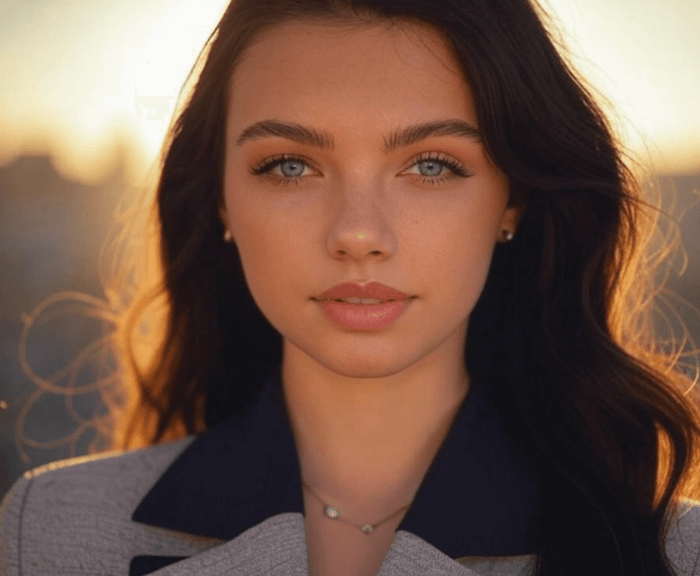
What Is AI Photo Enlargement?
At its core, AI photo enlargement is the use of machine learning algorithms to upscale images. Unlike basic software that stretches pixels, AI tools understand the context of what’s in the image and can distinguish between a human face, a piece of fabric, or an object, and apply specialized enhancements accordingly.
The result is a refined image that appears as if it was captured at a higher resolution.
This is particularly valuable in industries that rely on visual storytelling. For fashion brands, enhancing campaign images allows them to repurpose content for different platforms. For product designers and digital artists, it helps maintain clarity and detail when presenting their work on larger displays or in printed formats. Even historical archives and personal memories can benefit, bringing new life to low quality images.
How AI Improves Image Quality
AI photo enlargement tools work by training on thousands or even millions of high-resolution images. These training sets help the AI recognize patterns in skin textures, shadows, fabrics, and objects, so it can predict and recreate missing pixels when an image is enlarged.
Most modern AI tools rely on deep learning models, which simulate how the human brain processes visual information. When you upload an image to an AI platform, the system analyzes the content, identifies patterns, and generates new pixels that align with the original structure and style of the image. This is what sets AI photo enlargement apart from older resizing methods: it doesn’t just copy and stretch pixels; it builds detail from scratch.
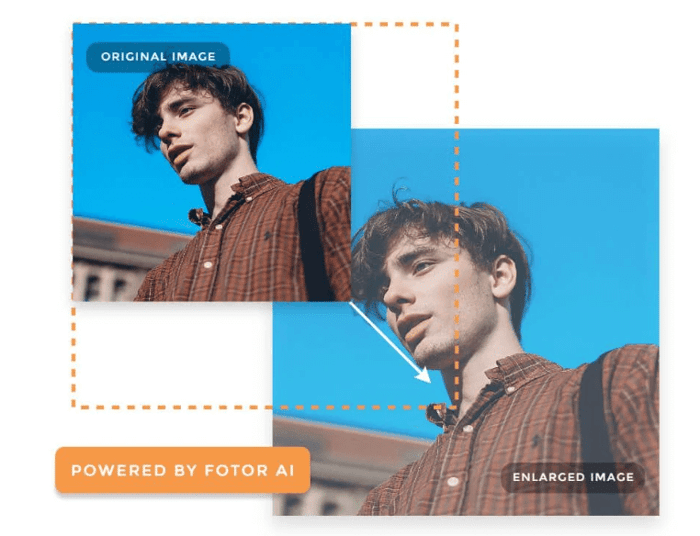
Some tools also allow for style control or targeted improvements. For example, users can choose to preserve smoothness, sharpen edges, or emphasize textures depending on the intended use of the image. This level of customization makes AI photos useful for a range of applications, from large format prints to mobile-friendly designs.
Benefits of AI Photo Enlargement Across Fields
AI photo enlargement offers distinct advantages in multiple industries:
E-commerce and Fashion: Brands can enhance product shots to use across websites, catalogs, and social media without organizing new photoshoots.
Media and Publishing: Publishers can improve archive photos for both print and digital use.
Photography and Design: Photographers can enlarge cropped or older images to meet modern quality standards.
Education and Research: Researchers can enhance scientific visuals, satellite imagery, or historical documents.
Marketing and Advertising: Campaigns can scale visuals for billboards or banners with consistent quality.
This technology also democratizes high-quality visuals so small businesses and independent creators can produce professional content without investing in costly reshoots or equipment upgrades. With AI, even a photo taken on an older phone can be enhanced to meet the standards of today’s visually driven platforms.
Popular AI Photo Enlargement Tools in 2024
There are a variety of AI tools available, each offering unique features depending on the user's needs. Some of the most popular and reliable options include:
Let’s Enhance: Ideal for creatives and marketers, offering batch processing and preset styles.
Topaz Gigapixel AI: A favorite among photographers for its high-quality upscaling and natural results.
VanceAI Image Enlarger: Offers fast processing and different output styles for web, print, or design.
Deep Image: Suitable for commercial use with easy integration and sharp enlargement results.
Icons8 Smart Upscaler: Great for simple and quick enhancements with minimal user input.
These platforms are designed with user-friendly interfaces, allowing anyone—from beginners to professionals—to improve their image quality with minimal effort.
Modelia and Visual Content Enhancement
An example of how this technology is applied in the fashion tech space is Modelia, a platform that uses advanced visuals to showcase fashion collections digitally. With the ability to enhance images or create high-quality visuals from basic inputs, Modelia allows designers and brands to present their work with clarity and impact. Whether used for digital showrooms or promotional videos, photo enlargement ensures every image meets professional standard, no matter the original resolution.
In scenarios where time and budget are limited, Modelia’s approach to automation and image quality can help emerging designers compete with established names by offering the same visual polish and presentation.

Try Modelia and see what AI can do!!
Future Outlook: Smarter, Faster, and More Accessible
The future of AI photo enlargement looks promising, with ongoing advancements in computing power, data training, and integration with other tools. In the near future, we can expect these systems to be integrated into everyday design software, mobile apps, and content management systems. This will allow seamless enhancement of visuals in real time.
Additionally, ethical AI usage and transparency will play a greater role. As tools become more sophisticated, platforms will need to ensure users understand how enhancements are applied, especially in journalism, research, and archival preservation. AI is also expected to play a role in video upscaling, offering higher-resolution video output from older or low-quality footage. This will have broad implications for entertainment, education, and digital media archiving.
Embracing the Power of AI in Visual Enhancement
AI photo enlargement is transforming how we work with images. By using artificial intelligence to improve clarity, resolution, and overall quality, creators are no longer limited by the technical shortcomings of their original files. This opens new creative and commercial possibilities across industries and levels of expertise.
As visual content becomes even more central to how we communicate, advertise, and create, AI tools will become essential in helping us meet the demand for sharper, more professional imagery. Whether you are a designer, a marketer, or simply someone with a passion for aesthetics, embracing AI photo enlargement offers a simple yet powerful way to elevate your visual content to the next level.
Modelia can help small business with lower budgets to create amazing real-looking images, specially for fashion brands creating virtual models in seconds and for a very lower price than hiring a real model and doing a photoshoot in real life. If this is interesting for your business subscribe to our newsletter and keep updated in our latest news.
How would you rate this article:
Related Articles
- Transform Your Photos Using AI Editing Tools
- 7 Best fashion AI tools for designers
- Top fashion brands leveraging artificial intelligence in 2025
- Essential Flat Lay Photography Tips for Perfect Shots
- Virtual Try-On Technology in Fashion: The Future of Online Shopping
- Image to Video AI: Transform Your Photos into Videos with AI
- 10 Best Artificial Intelligence Marketing Software for Small business
- The Best Fashion Blogs to Follow for Daily Style Inspiration
- 10 Best AI Fashion Free Model Generators
- AI Video Generator for Shopify

